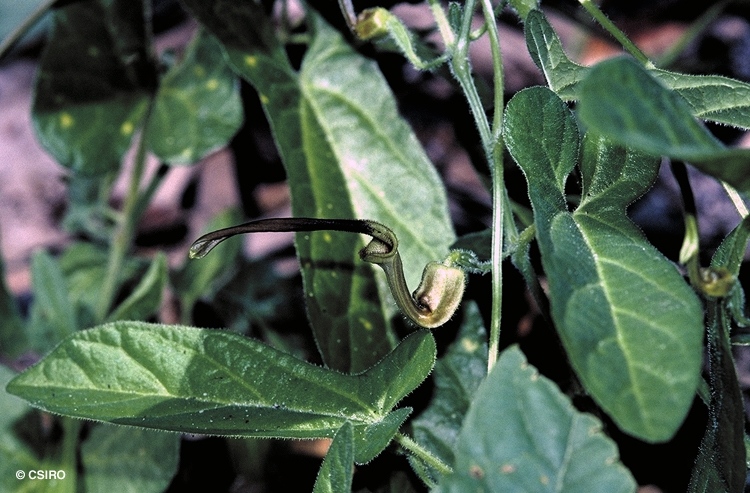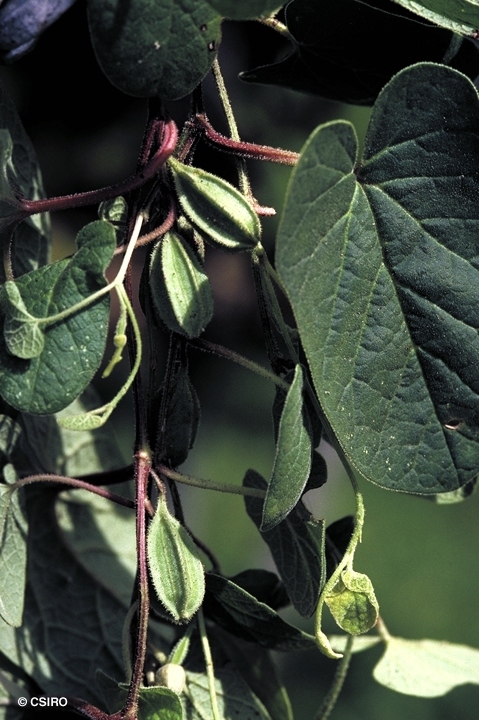Australian Tropical Rainforest Plants - Online edition
Aristolochia pubera R.Br. var. pubera
Ross, E.M. & Halford, D.A. (2007) Flora of Australia 2: 458. Type: Autonym.
Beantree; Stinking Aristolochia; Aristolochia, Stinking
A slender vine not exceeding a stem diameter of 2 cm.
Leaves +/- distichous, arranged in two ranks, one on each side of the twig. Leaf blades about 2.5-10 x 2-6.5 cm, petioles about 1.3-4.5 cm long. Petioles and twigs clothed in short pale hairs. Underside of the leaf blades with hairs along the major veins, not obviously gland dotted. Lateral veins depressed on the upper surface, about 3-5 on each side of the midrib. Leaves emit an aromatic or perhaps obnoxious odour when crushed. Stems +/- hexagonal in transverse section.
Flowers +/- horizontal. Perianth curved and sinuous, base inflated about 5-6 mm diam. and then contracted forming a tube about 17 mm long including the inflated base. Tube ending in a lip and a long +/- linear lobe about 20-25 x 1-1.5 mm. Stamens 6, fused together to form a structure around the style. Anthers sessile. Stigmas 6. Ovary 6-locular. Ovules numerous in each locule.
Capsules about 15-18 mm long, after dehiscence resembling a parachute. Seeds numerous. Each seed cordate in outline, about 4 x 3 mm. Endosperm oily. Embryo minute.
Cotyledons elliptic, about 9-11 x 5-6 mm, petioles about 2 mm long, +/- 3-veined at the base and with only one other lateral vein on either side of the midrib. First pair of leaves ovate, about 10 x 9 mm, apex obtuse, base obtuse to cordate. At the tenth leaf stage: leaves borne in two ranks on the stem. Leaf blades trilobed, apex obtuse, base cordate to truncate. Both the upper and lower leaf blade surfaces clothed in short, soft, translucent hairs. Petioles clothed in similar hairs. Stems hexagonal in transverse section. Stems twining. Taproot long and thickened. Seed germination time 341 days.
Endemic to Australia, occurs in NT, CYP, NEQ and CEQ. Altitudinal range from near sea level to 350 m. Often grows in open forest but also occurs in monsoon forest and vine thickets.
Food plant for the larval stages of the Big Greasy Butterfly. Common & Waterhouse (1981).







